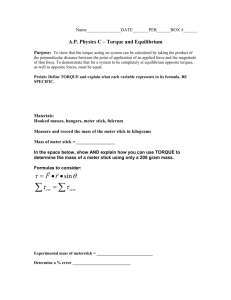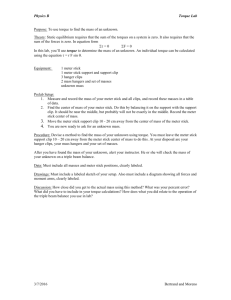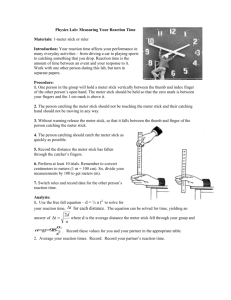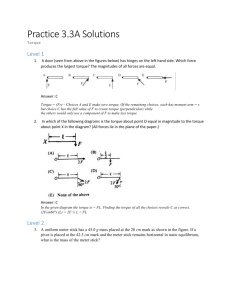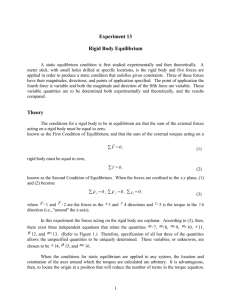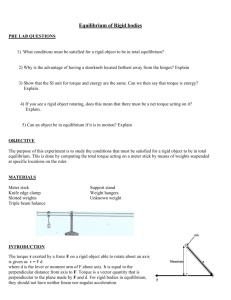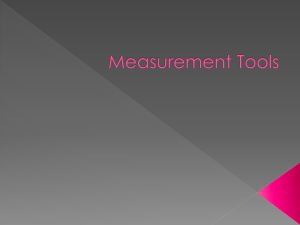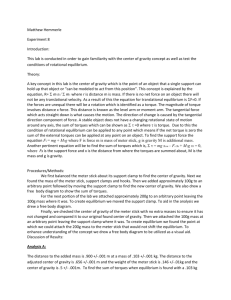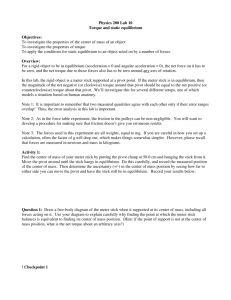Torque and Equilibrium Lab: Physics Experiment
advertisement
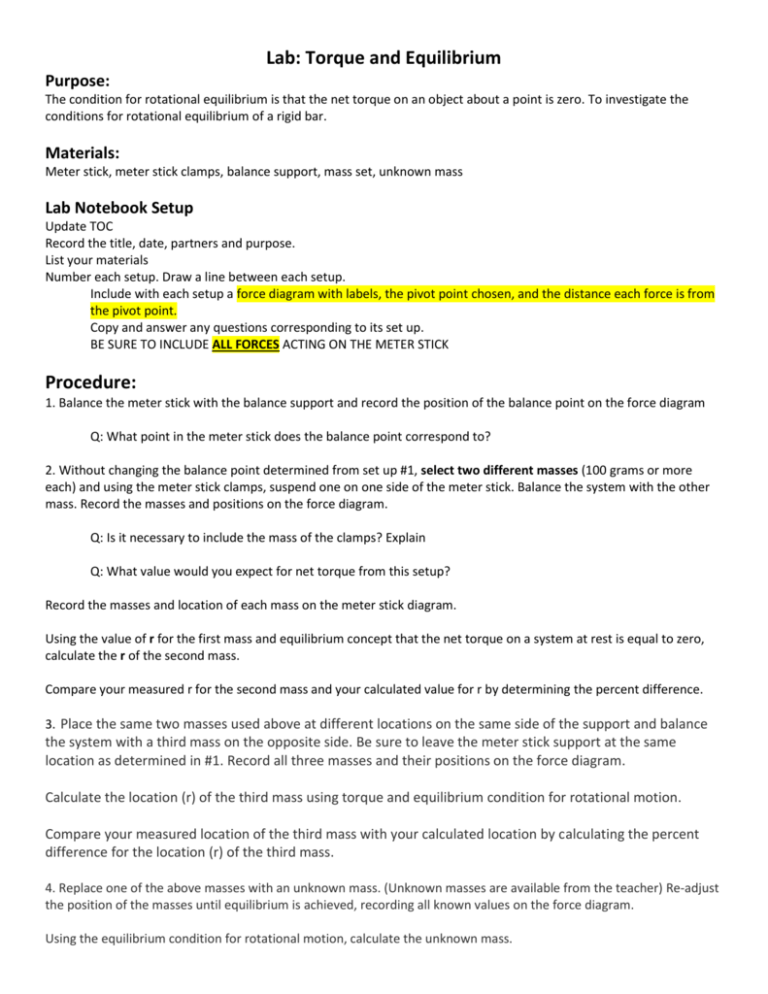
Lab: Torque and Equilibrium Purpose: The condition for rotational equilibrium is that the net torque on an object about a point is zero. To investigate the conditions for rotational equilibrium of a rigid bar. Materials: Meter stick, meter stick clamps, balance support, mass set, unknown mass Lab Notebook Setup Update TOC Record the title, date, partners and purpose. List your materials Number each setup. Draw a line between each setup. Include with each setup a force diagram with labels, the pivot point chosen, and the distance each force is from the pivot point. Copy and answer any questions corresponding to its set up. BE SURE TO INCLUDE ALL FORCES ACTING ON THE METER STICK Procedure: 1. Balance the meter stick with the balance support and record the position of the balance point on the force diagram Q: What point in the meter stick does the balance point correspond to? 2. Without changing the balance point determined from set up #1, select two different masses (100 grams or more each) and using the meter stick clamps, suspend one on one side of the meter stick. Balance the system with the other mass. Record the masses and positions on the force diagram. Q: Is it necessary to include the mass of the clamps? Explain Q: What value would you expect for net torque from this setup? Record the masses and location of each mass on the meter stick diagram. Using the value of r for the first mass and equilibrium concept that the net torque on a system at rest is equal to zero, calculate the r of the second mass. Compare your measured r for the second mass and your calculated value for r by determining the percent difference. 3. Place the same two masses used above at different locations on the same side of the support and balance the system with a third mass on the opposite side. Be sure to leave the meter stick support at the same location as determined in #1. Record all three masses and their positions on the force diagram. Calculate the location (r) of the third mass using torque and equilibrium condition for rotational motion. Compare your measured location of the third mass with your calculated location by calculating the percent difference for the location (r) of the third mass. 4. Replace one of the above masses with an unknown mass. (Unknown masses are available from the teacher) Re-adjust the position of the masses until equilibrium is achieved, recording all known values on the force diagram. Using the equilibrium condition for rotational motion, calculate the unknown mass. Measure the mass of the unknown on a balance. Record value. Compare your calculated value of the unknown mass with the mass measured on the balance by calculating the percent error. 5. Using your knowledge of torque and equilibrium, design an experiment to determine the mass of the meter stick. Write out your procedure and then carry out the experiment. Record your answer. Obtain the mass of the meter stick from a balance. Compare your experimental mass of the meter with the mass you obtained from the balance by calculating the percent error with the meter stick mass obtained from the balance. Q: Should the clamp holding the meter stick be included as part of the mass of the meter stick? EXPLAIN!
